Fabric Focus: There's Nothing Quite Like Linen
http://decor-ideas.org 07/18/2015 00:14 Decor Ideas
Linen is not just old, it’s ancient. Thousands of years ago, Egyptians wrapped mummies in it, and dyed-linen fibers have been found in prehistoric caves. The ancient Romans had a poetic name for linen, textus ventilus, meaning “woven wind.” Though probably the world’s oldest fabric, linen is still kicking it in the 21st century. Its classic texture makes it a hot commodity in home decor. Here’s what you need to know about using this comfy fabric in your home.
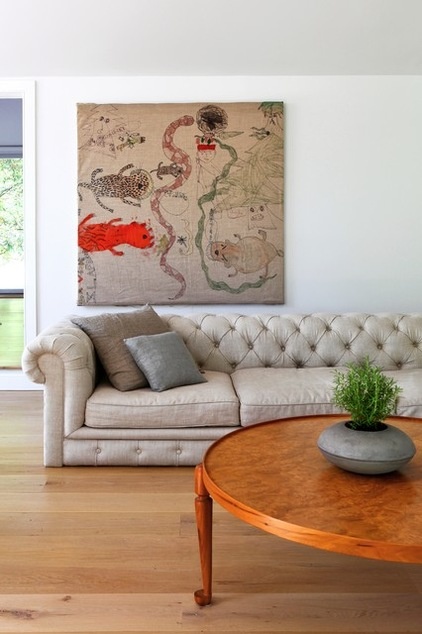
What Is Linen?
Linen is made from the flax plant, which looks like a cross between a cornflower and a lavender plant. It’s a bast fiber, which comes from the tough, stalky, supportive part of a plant. Flax is grown worldwide, but since the 1950s, most of the flax used for fabric has originated in Northern Europe, namely France, the Netherlands and especially Belgium, because of the ideal climate. You’ll notice a lot of linen decor fabric is touted as Belgian linen.
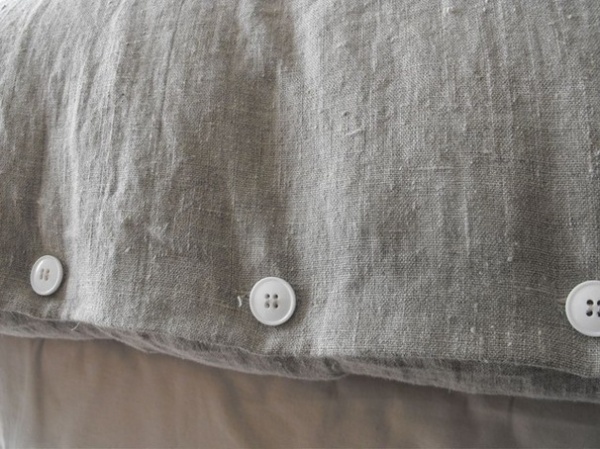
Pros of Using Linen
Texture. Linen’s slubby texture is its main allure. In this photo you can see how the light delicately plays on the surface.
Soft and cool. Linen is smooth and cool to the touch, which is why it’s a favorite summertime fabric. It also gets softer with use.
Durability. Linen is one of the strongest, most durable fabrics available. It’s about three times as strong as cotton. Though you probably won’t be dipping your linen drapes in water, linen actually gets stronger when wet. In fact, hardworking U.S. money is printed on paper made of 25 percent linen. And it is said that medieval armor shields were made with linen. It’s pretty tough stuff.
Lint- and abrasion-resistant. Because linen’s fibers are smooth and quite long (longer than those of cotton), it doesn’t shed or pill like other fabrics.
Natural color and luster. Linen naturally has a beautiful sheen and earthy color, varying from beige to ecru to gray. White linen has been heavily bleached.
Anti-microbial and mildew-resistant. Linen is inherently anti-microbial and is even resistant to mildew.
Eco-friendly. Linen is by nature a green product. Flax plants don’t require irrigation, need little or no pest control, require little energy in the processing and aren’t harmful to the environment.
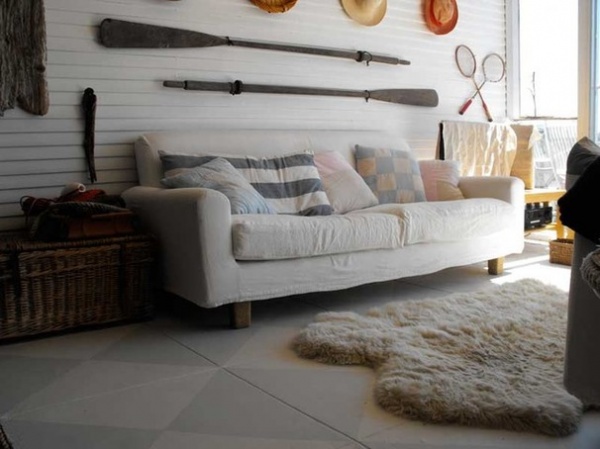
Cons of Using Linen
Wrinkly. Linen’s wrinkly personality is no surprise. Flax fibers have low elasticity, or ability to stretch, and low resilience, meaning they don’t spring back to their original shape after being compressed.
Though some people cringe at linen’s crinkles, others consider them part of its charm. Just know you’ll need to embrace linen’s irregular character to make it work for you.
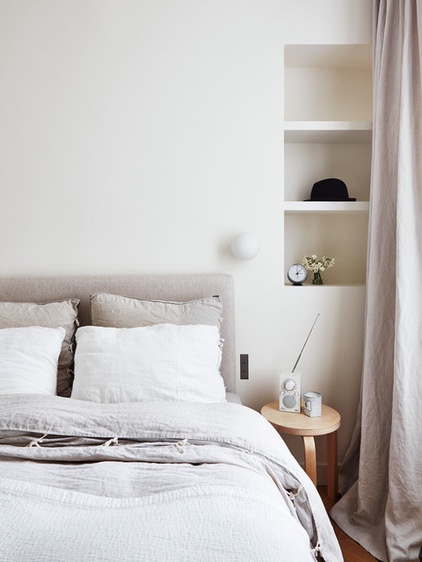
Where to Use Linen
Besides the conventional dining room tablecloth, here are some other areas of your home that can benefit from this luscious natural fabric.
Bedding. Bed linens is an umbrella term used to describe fabric used on the bed and traditionally made from — you guessed it — linen.
Linen bedding, like the duvet cover and pillows shown here, tends to have a casual look, so it’s not going to be right for everyone. Know that linen does get progressively softer with washings. Many folks love linen sheets and find them not only cool in the summer but also warm in the winter.
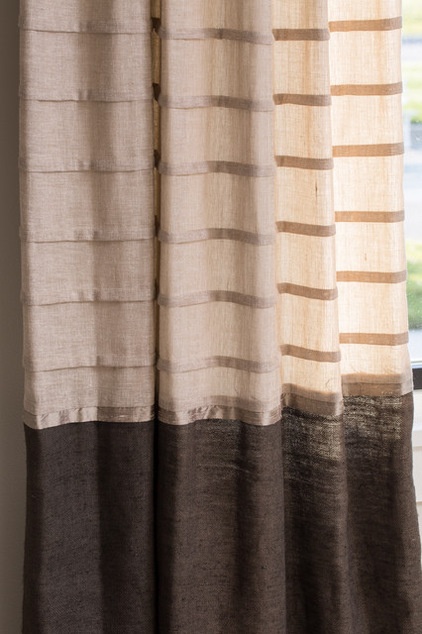
Window shades and drapery. Linen has long been a favorite for window treatments because light filters subtly through the weave of the fabric. In this example, a striped design is generated by using the opacity created by layering the fabric. Caryn OSullivan of Drapery Street says the striking fabric on the top portion of the drapery panel features a thin doubled-up layer of linen that is already integrated into the fabric.
If you’re considering linen for drapery fabric, make sure it’s at least mid-weight. Lightweight linens are for clothing. Many fabric samples are labeled for types of use and may indicate whether drapery use is advised.
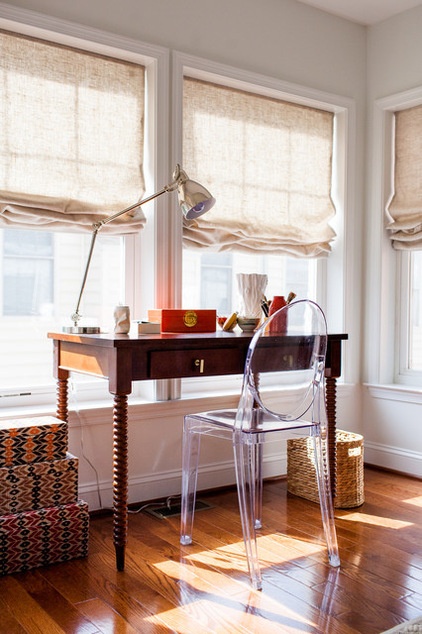
While lined linen drapery is the conventional way to go, using unlined linen on windows is also popular. Such a treatment is semi-transparent, as on the relaxed Roman shades shown here.
Though appropriate for a reading area, kitchen or sitting room, unlined linen window treatments are not a good option in rooms where you want privacy or room darkening, like a TV room or bedroom. Also be aware that unlined linen will probably wear prematurely from exposure to UV rays. It’s recommended to avoid using unlined linen on south- and west-facing windows that get a lot of direct sunlight.
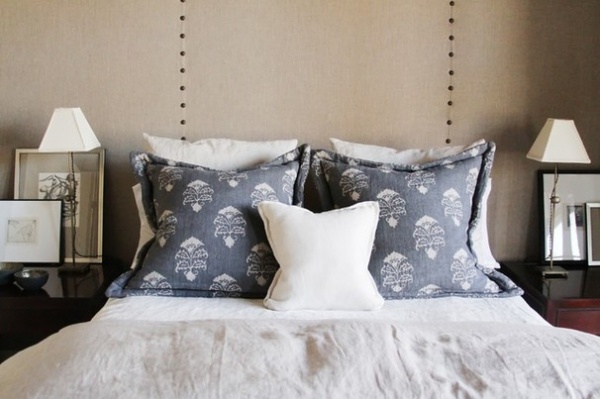
Walls. Linen fabric is also used to upholster walls. This traditional finish is an ideal way to add acoustic and thermal insulation. A solid-color linen wallcovering creates a neutral backdrop to let the other components of the room take the visual spotlight. The antiqued nailheads separating the fabric panels in this bedroom add an understated, classic touch to the installation. Some folks use linen-wrapped cork panels to make the surface pinnable.
If linen-upholstered walls aren’t an option for you but you like the look, there’s also linen fabric wallcovering as well as vinyl and paper wallcoverings that mimic the look of linen.
See more on upholstering your walls
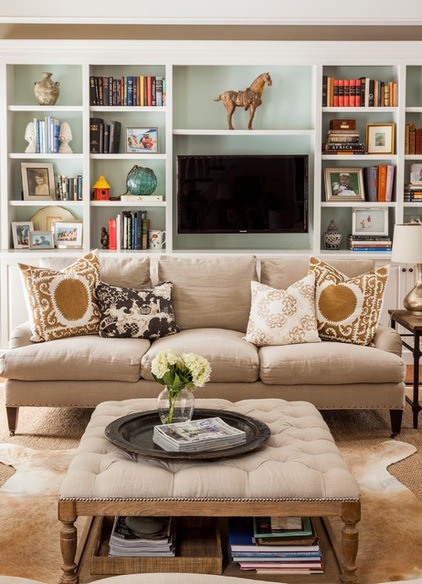
Upholstery. Linen upholstery is chameleon-like, working well on very traditional pieces, like this English roll-arm sofa, as well as boxy, contemporary pieces and even slipcovers.
Linen used for upholstery needs to be on the heavier side, so look for one with labeling that indicates it’s suitable for upholstery. However, keep in mind that a lot of linen upholstery fabric is frequently blended with fibers like rayon, viscose or cotton for added durability.
Blended linens can be lighter in weight compared with pure linen, so consider the fabric weight as well as the ratio of the fiber. Manufacturers often label a fabric as “upholstery-weight.” Also check to see if your sample has results from either the Wyzenbeek or Martindale abrasion test. These tests measure how quickly the fabric wears. A result of 15,000 double rubs or more is considered heavy-duty.
Also make sure you have quality cushioning with linen upholstery fabric. A down-feather blend is a good choice for loose cushions because of its moldability and because it suits the casual nature of linen. A lower-quality firm foam cushion might look like a linen-covered brick.
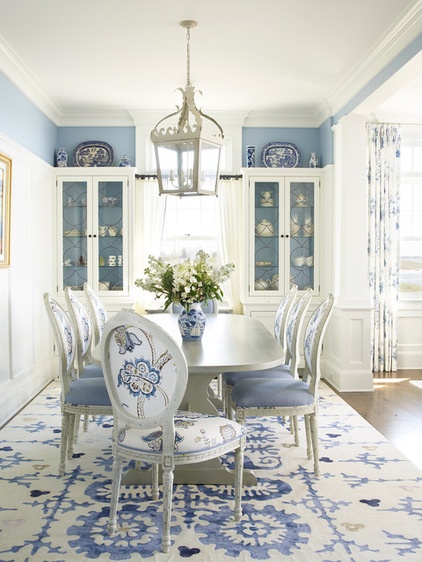
If loose and floppy isn’t your look, use linen fabric on smaller, framed pieces. Unlike upholstery with loose cushions, the upholstery on these dining chairs is constrained by framing, resulting in a clean, formal appearance.
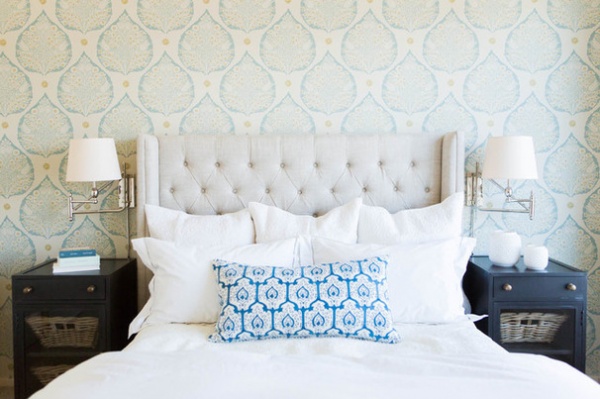
Linen looks dashing when it’s upholstered in a tufted design, like on this headboard. Solid versus patterned linen fabric particularly enhances the lines, highlights and shadows created by the change in volume of the tufting.
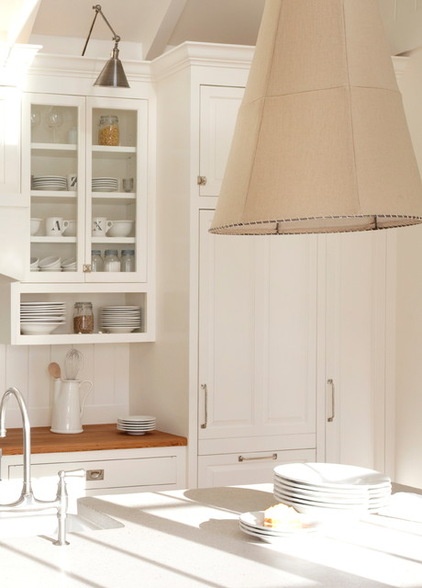
Lamp shades. Just as sunlight looks great coming through linen window treatments, so it goes for lamps. Linen lamp shades add visual interest and texture to any space.
Designer Lisa K. Tharp commissioned these custom pendant lights, which are made from raw steel frames wrapped with twine, then finished in linen fabric.
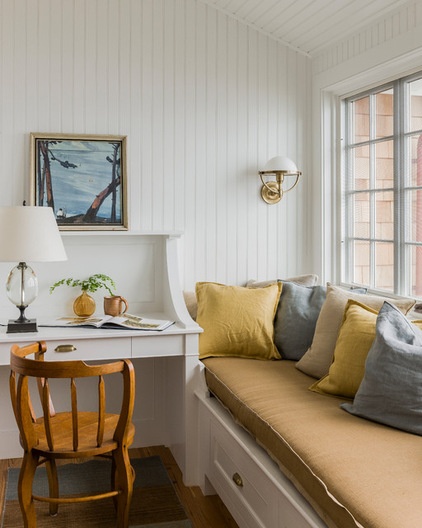
Pillows. If you’re considering incorporating linen in your decor but aren’t ready to go all out on a larger piece like a sofa, try out some linen pillows. The commitment level is small, and you can easily change them seasonally if you wish.
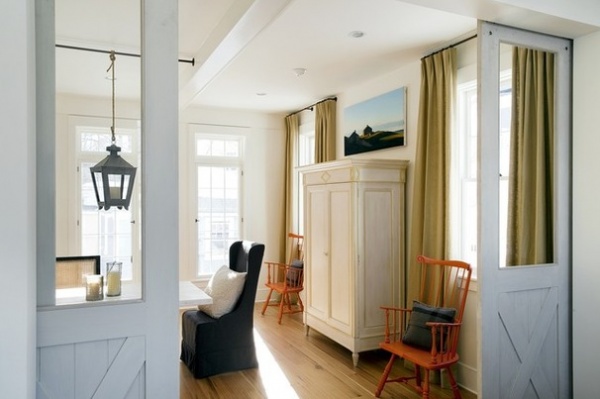
Cleaning Linen
Always follow any cleaning instructions from the manufacturer of the linen you purchased. However, linen can be dry-cleaned, machine-washed and steamed (for draperies).
Though linen will shrink when initially washed and dried, it tends to stay put with subsequent cleaning. Be careful to not over-dry it in a tumble dryer and stay clear of bleach for white linen, as it weakens the fibers.
Cost
As with most fabric, cost varies for linen. A ballpark range is between $40 and $225 per yard. Most mid-weight drapery linen will be in the $40 to $75 range. Heavier upholstery linen ranges from about $80 to $225 per yard, depending on the weight and country of origin.
See more fabric stories: Chintz | Ticking Stripe | Velvet | Grain Sacks | Crewel | Matelassé
Related Articles Recommended












